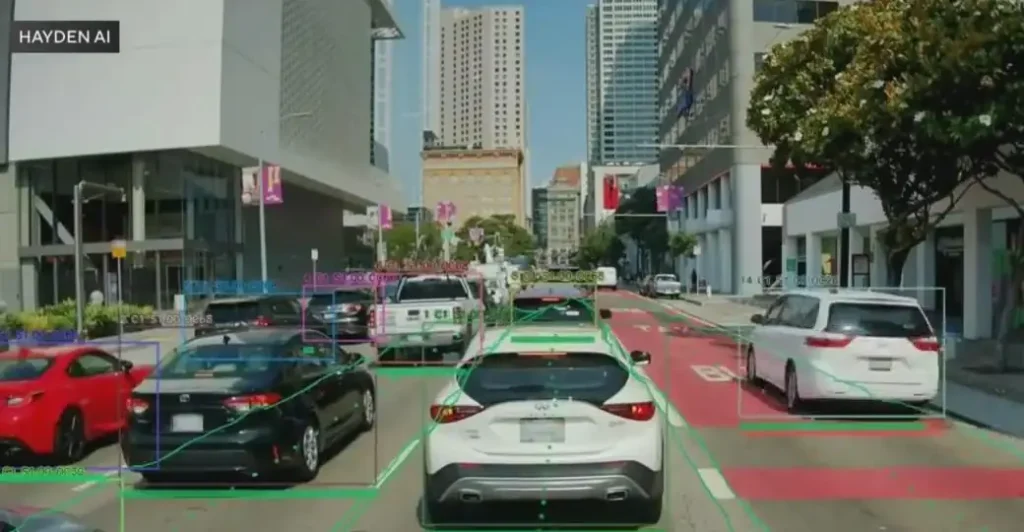
Introduction
In a groundbreaking move, the Los Angeles Metropolitan Transportation Authority (Metro) has recently implemented a state-of-the-art artificial intelligence (AI) system on its fleet of buses. This innovative approach aims to enhance traffic flow and enforce bus lane regulations more effectively in the bustling streets of Los Angeles.
The Technology Behind the System
AI-Powered Cameras: A New Era of Traffic Monitoring
The core of this new system lies in the deployment of 100 AI-powered cameras, strategically installed in the windshields of Metro buses. These cameras are not ordinary surveillance devices; they are equipped with advanced AI algorithms capable of identifying vehicles infringing upon bus lanes during restricted hours.
How it Works
- Detection: The AI technology is programmed to detect vehicles parked or driving illegally in bus lanes.
- Image Capture: Upon detecting a violation, the system captures an image of the vehicle, focusing on the license plate.
- Data Transmission: These images are then transmitted to the city’s parking enforcement department for further action.
This process marks a significant leap from traditional monitoring methods, offering real-time, accurate, and efficient enforcement of traffic laws.
Data Privacy and Retention Policies
In compliance with privacy laws, the system adheres to strict data retention policies:
- Images of non-violating vehicles are deleted within 15 days.
- For vehicles that receive a ticket, images are retained for 60 days before deletion.
Impact on Traffic Management
Reducing Congestion
By targeting vehicles that misuse bus lanes, the AI system plays a crucial role in reducing traffic congestion. Buses can move more freely, thus improving public transportation efficiency and overall traffic flow in the city.
Deterrence and Compliance
The implementation of this AI system serves as a deterrent for drivers considering the misuse of bus lanes. With the heightened possibility of being caught and fined, compliance is expected to rise, further aiding in the smooth operation of public transportation.
Financial Implications
- Fines: The fine for parking in a bus loading zone in Los Angeles County is set at $250.
- Warnings and Penalties: Drivers receive one warning before being ticketed for repeat offenses.
Comparing to Other Cities
Los Angeles follows in the footsteps of cities like San Francisco and Washington, D.C., which have already implemented similar AI systems. This adoption showcases a growing trend in urban centers to leverage technology for better traffic management.
Future Prospects
This pilot program, initiated as a result of a bill passed by California lawmakers in 2021, is set to continue until 2027. Its success could pave the way for broader implementation and potentially inspire other cities to adopt similar technologies.
Conclusion
Los Angeles Metro’s adoption of AI technology for bus lane enforcement is a testament to the city’s commitment to leveraging innovative solutions for urban challenges. This system not only ensures the efficient operation of public transportation but also marks a significant step towards smarter, more sustainable city living.
Looking Ahead
As technology continues to evolve, we can expect to see more such integrations in various facets of urban management, contributing to the creation of smarter, more efficient cities worldwide.